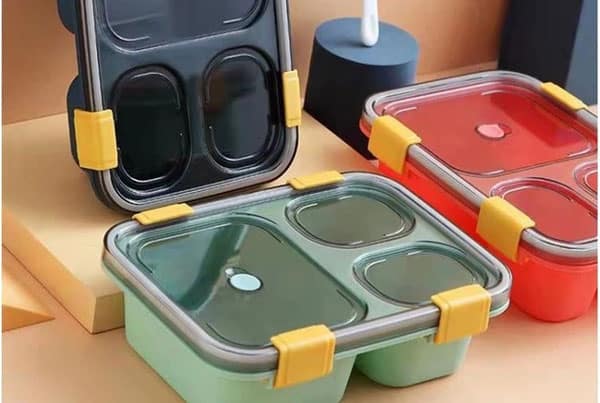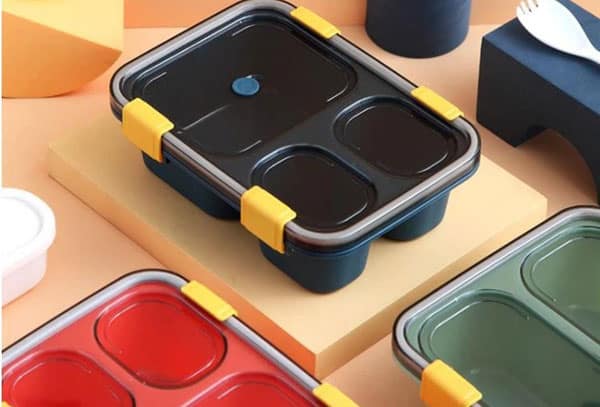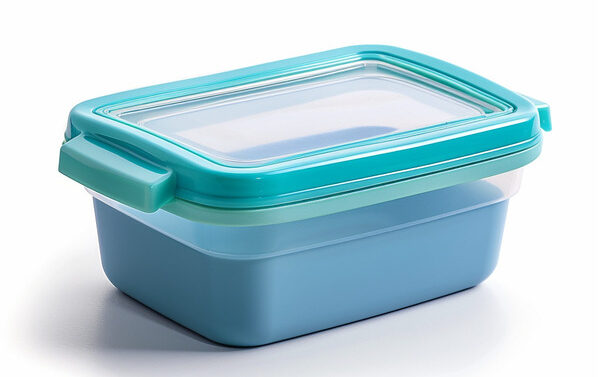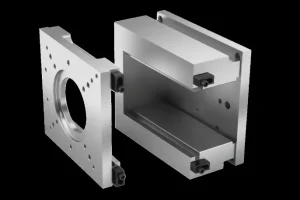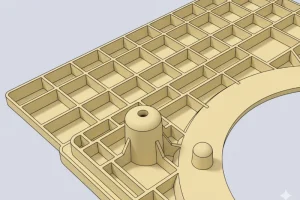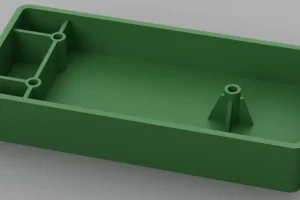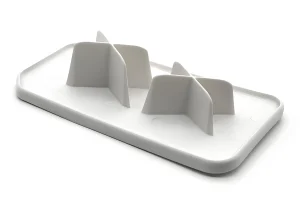Injection molding machines are capable of producing plastic lunch boxes efficiently, making them a popular choice in the packaging industry.
Injection molding machines can produce plastic lunch boxes. This process allows for high-volume production with consistent quality and design versatility. Key advantages include reduced production costs, rapid cycle times, and the ability to create complex shapes with precise specifications.
While this summary outlines the capabilities of injection molding machines for lunch box production, it’s important to consider factors like material selection and design intricacies to maximize production efficiency. Discover how different molding techniques can enhance your product offerings.
Injection molding machines can produce plastic lunch boxes.True
Injection molding is a highly efficient process suitable for manufacturing plastic lunch boxes in large quantities with high precision.
All injection molding machines are equally effective for lunch box production.False
The effectiveness of injection molding machines can vary based on design, capacity, and the specific materials used, impacting production quality and efficiency.
What is Injection Molding?
Injection molding involves heating plastic until it melts, then injecting it into a mold where it cools and solidifies. This method is widely used for creating components in automotive, consumer goods, and medical applications. Key benefits include reduced waste, fast production speeds, and the ability to create complex shapes with high accuracy.
Injection molding is a manufacturing process where you melt plastic pellets or granules and inject the molten material into mold cavities. The mold is made to give the plastic the shape you want. After the plastic cools and hardens, you open the mold and take out the product. It’s a really good way to make lots of the same thing, and it’s really accurate and consistent.
What is the Versatility of an Injection Molding Machine?
Injection molding machines can create complex shapes with high precision and repeatability. They are adaptable for various materials, including thermoplastics and thermosets, and are widely used in automotive, consumer goods, and electronics. Key advantages include reduced waste, fast production speeds, and the ability to produce both small and large parts efficiently.
The injection molding machines are available in different sizes and configurations, each of them designed to cater to different types of plastics and the product requirements. These machines are able to create products of different shapes, sizes, and complexities, for example, the smaller medical devices and the larger automotive components. The machine plug that is responsible for the injection molding can be easily changed to fit the mold design and process parameters.
How to Make a Plastic Lunch Box Using Injection Molding?
Making a plastic lunch box using injection molding involves several steps: designing the mold, choosing the right plastic material, heating the plastic, injecting it into the mold, and allowing it to cool and solidify. Key advantages include high production efficiency, uniform quality, and the ability to create complex shapes.
Making plastic lunch boxes using injection molding is not easy and requires some thought. First, the design has to be functional to make sure the lunch boxes are strong, easy to clean, and can store food safely. Second, the material choice, mold layout, and production efficiency are the key components of the manufacturing process feasibility and determine the success of the process.
Considerations in Mold Design
To make plastic lunch boxes, you use injection molding, which means you have to make special molds. The mold has two parts: the cavity and the core1, which together make the lunch box shape. When you design the mold, you have to think about things like how thick the walls are, how the sides slope, and even how the hinges or clasps work. The most important thing in injection molding is how good the mold design and the tooling are. You have to design the mold so that the lunch box parts come out right, with no mistakes, and so that the parts that fit together, like the hinges or the way the box closes, work right. The quality of the molds is what makes sure the plastic fills up right, cools off right, and comes out of the mold right.
When you make plastic lunch boxes with injection molding, you have to think about how they look, how they work, and how big they are. The mold has to have places for knobs, hinges, and latches that will still make the lunch box strong and last a long time. You also have to think about how easy it is to clean, how safe it is for food, and how it looks. You have to get all these things right to make a lunch box that people will like and want to buy.
Also, when you’re designing plastic lunch boxes for injection molding, you need to think about things like wall thickness, draft angles, and parting lines. These design considerations affect not only the quality and strength of the final product, but also the manufacturing process and the life of the mold.
Process Optimization
Once the molds are made, the next step is to optimize the injection molding process to achieve the quality and consistency of the plastic lunch boxes. This involves adjusting parameters such as injection pressure2, temperature, cooling time, and cycle time. Proper process optimization helps reduce defects such as warping, shrinkage, and surface imperfections, resulting in high-quality lunch boxes that meet the required standards.
Material Selection
The stuff the box is made of is the big thing that determines how good and right the plastic lunch boxes are. The most common thermoplastic 3materials for injection molding are polypropylene (PP), polyethylene (PE), and polystyrene (PS), which have different strengths, flexibilities, and heat resistances. The first thing to think about when you’re picking materials for making lunch boxes is whether the materials are approved for food contact, whether they can be recycled, and whether they’re cost-effective. Also, the advances in bioplastics mean there are green alternatives that fit in with the eco-friendly ways of making things. Here are some materials people use to make plastic lunch boxes:
Polypropylene (PP) is a common material for plastic lunch boxes. It’s heat and cold resistant, so you can microwave it. PP is also impact resistant and corrosion resistant, so your food stays fresh and safe. That’s why PP lunch boxes are great for everyday meals at home or at work.
Polyethylene (PE) is another material used for plastic lunch boxes. It’s flexible and abrasion resistant, so you can make a good seal. You see PE lunch boxes a lot in takeout and fast food restaurants. They keep your food hot or cold and keep the flavor in.
Polystyrene (PS) is a clear plastic that is often used to make clear lunch boxes and fruit boxes. PS lunch boxes look good, are very clear and can show the color and texture of the food very well, so they are often used in some high-end restaurants and gift boxes.
Polyvinyl chloride (PVC) is the most common material for plastic lunch boxes. It has good weather resistance and corrosion resistance, so it is suitable for outdoor picnics and outdoor activities. PVC lunch boxes have good sealing performance, which can reduce the chance of food leakage and contamination.
Also, in addition to the common materials for plastic lunch boxes mentioned above, there are some new eco-friendly materials such as polylactic acid (PLA) and biodegradable plastics, which have the good biodegradability and are environmentally friendly, thus, are appreciated by the people, and have been gaining popularity.
Choosing the material for plastic lunch boxes is about narrowing down the options based on different situations and needs. For example, you might choose PP material for household lunch boxes because it has high heat resistance. You might choose PE material for take-out lunch boxes because it has good sealing properties. You might choose PS material for high-end restaurants because it looks transparent and beautiful. You might choose PVC material for outdoor activities because it has good weather resistance.
So, there are many types of materials for plastic lunch boxes, each one having its own properties and uses. When we use plastic lunch boxes, we should choose and use them in a way that is convenient and safe with our actual needs in mind to make sure that our food is safe and healthy.
What is Injection Molding and Thermoforming in Lunch Box Production?
Injection molding allows for precise, complex shapes and high-volume production of lunch boxes, utilizing molten plastic injected into molds. Thermoforming, on the other hand, involves heating plastic sheets until pliable and then forming them over molds, making it ideal for simpler designs and lower production runs. Both methods contribute to cost-effective and sustainable packaging solutions.
The injection-molded lunch boxes and thermoformed lunch boxes are two different plastic processing technologies, each has its own peculiarities and advantages and disadvantages. Here are their process characteristics and corresponding pros and cons:
Injection Molding
Melting Stuff: Injection molding is when you heat up and melt plastic pellets, then shoot the melted plastic into molds using an injection molding machine. The plastic cools and hardens into the shape you want.
Super Precise: Injection molding is super precise and consistent, which is great for lunch boxes that need to be a certain size and have complicated shapes.
Fast: Injection molding is usually really fast, so it’s good for making a lot of lunch boxes at once.
Strong: Injection-molded lunch boxes are stronger than thermoformed ones because they’re made with high heat and pressure.
Advantages:
Batch Production: Injection molding is the right technique for the manufacturing of countless lunch boxes in an economical and efficient way.
Design Flexibility: The procedure is the way to make complex designs, textures, and features to be inlcuded in the lunch box molds, thus, that is the way to the customization and branding.
Material Selection: A wide range of thermoplastic materials can be used, each exhibiting different properties like durability, insulation and food safety compliance.
Consistent Quality: By the means of the right process control, injection molding is able to make sure that all the created lunch boxes have the same quality and at the same time, the variations and the defects are less.
Disadvantages:
Higher manufacturing costs, especially initial mold costs.
Not suitable for small-batch production.
Some waste may be generated during the injection molding process .
Thermoforming
Thermoforming: Thermoforming is a process where thermoplastic sheets are heated to soften them, then vacuum suction is used to attach them to the surface of molds, and then they are cooled and hardened into the desired shape.
Complex Shapes: Thermoforming is used to make lunch boxes with complex shapes, like ones with irregular or contoured boxes.
Low-cost Tooling: Thermoforming molds are cheap to make, so you can make small batches of products and quick prototypes4.
High Customization: You can personalize the design, so you can make lunch boxes in different shapes and colors to meet the needs of your customers.
Advantages:
Good for making lunch boxes with complex shapes.
Lower manufacturing costs, good for small-batch production and rapid prototyping.
Easy to achieve personalized customization.
Disadvantages:
Slower production speeds, not good for big production.
Lunch boxes are usually pretty thin and might not be as strong as injection-molded ones.
May not be good for some foods, as thermoformed lunch boxes might not hold up to high temperatures.
Conclusion
Plastic injection molding machines5 can make plastic lunch boxes because they are versatile and can be adapted to different molds and materials. By thinking about mold design and setting process parameters, manufacturers can make a lot of high-quality, strong, and beautiful lunch boxes. Next time you use a plastic lunch box, think about how great injection molding machines are for making these things that we use every day and that make our lives
better.
- Learn about What is core and cavity in injection molding : In injection molding, the core is the interior part of the mold that shapes the inner features of the product, while the cavity forms the outer contours. ↩
- Learn about How do you calculate injection pressure : Injection pressure is calculated using the formula: Injection Pressure = (Material Viscosity × Flow Rate) + (Frictional Losses). ↩
- Learn about What are thermoplastics : Thermoplastics have a simple molecular structure comprising chemically independent macromolecules. ↩
- Learn about Advantages of Small Batch Production for Rapid Prototyping Technology: Rapid prototyping and small batch production allow you to complete your product in a shorter time. ↩
- Learn about Injection molding machine: An injection molding machine is a machine for manufacturing plastic products by the injection molding process. ↩







